Gunnar Peters
Co-existing/Cooperating Multicell Massive MIMO and Cell-Free Massive MIMO Deployments: Heuristic Designs and Performance Analysis
Apr 23, 2024Abstract:Cell-free massive MIMO (CF-mMIMO) represent a deeply investigated evolution from the conventional multicell co-located massive MIMO (MC-mMIMO) network deployments. Anticipating a gradual integration of CF-mMIMO systems alongside pre-existing MC-mMIMO network elements, this paper considers a scenario where both deployments coexist, in order to serve a large number of users using a shared set of frequencies. The investigation explores the impact of this coexistence on the network's downlink performance, considering various degrees of mutual cooperation, precoder selection, and power control strategies. Moreover, to take into account the effect of the proposed cooperation scenarios on the fronthaul links, this paper also provides a fronthaul-aware heuristic association algorithm between users and network elements, which permits fulfilling the fronthaul requirement on each link. The research is finally completed by extensive simulations, shedding light on the performance outcomes associated with the diverse cooperation levels and several solutions delineated in the paper.
Cellular Traffic Prediction and Classification: a comparative evaluation of LSTM and ARIMA
Jun 03, 2019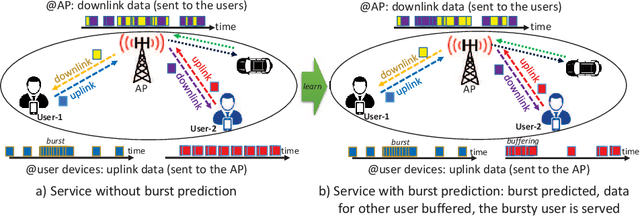

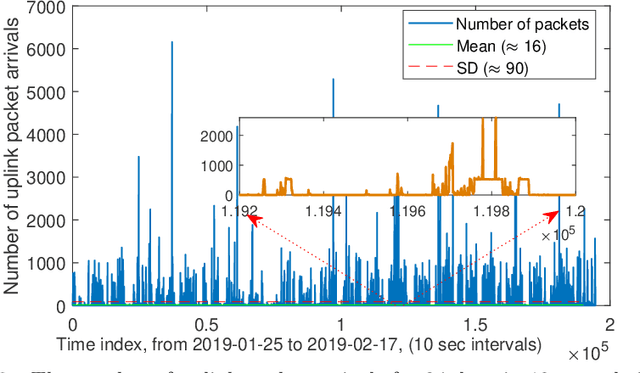
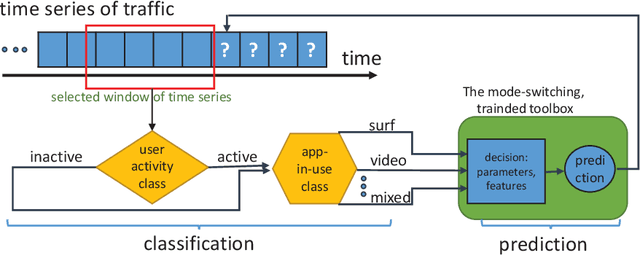
Abstract:Prediction of user traffic in cellular networks has attracted profound attention for improving resource utilization. In this paper, we study the problem of network traffic traffic prediction and classification by employing standard machine learning and statistical learning time series prediction methods, including long short-term memory (LSTM) and autoregressive integrated moving average (ARIMA), respectively. We present an extensive experimental evaluation of the designed tools over a real network traffic dataset. Within this analysis, we explore the impact of different parameters to the effectiveness of the predictions. We further extend our analysis to the problem of network traffic classification and prediction of traffic bursts. The results, on the one hand, demonstrate superior performance of LSTM over ARIMA in general, especially when the length of the training time series is high enough, and it is augmented by a wisely-selected set of features. On the other hand, the results shed light on the circumstances in which, ARIMA performs close to the optimal with lower complexity.
User Traffic Prediction for Proactive Resource Management: Learning-Powered Approaches
May 09, 2019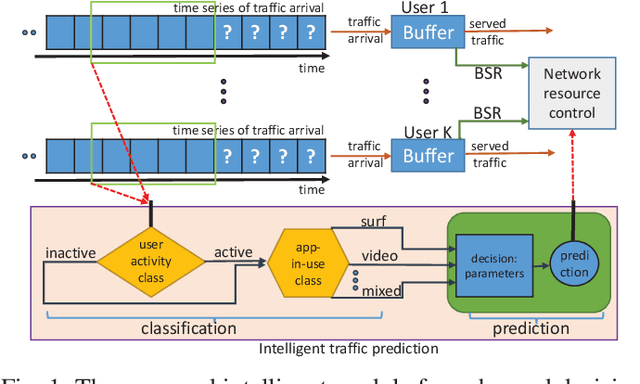
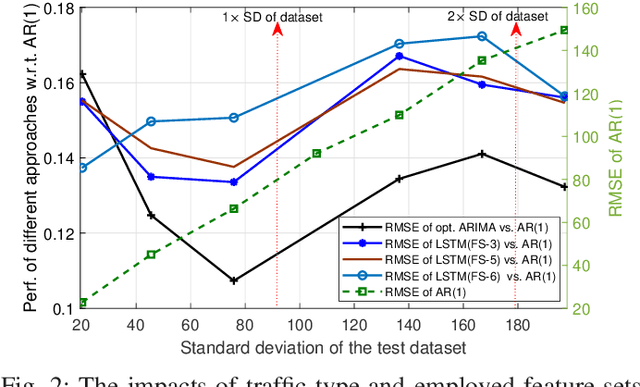
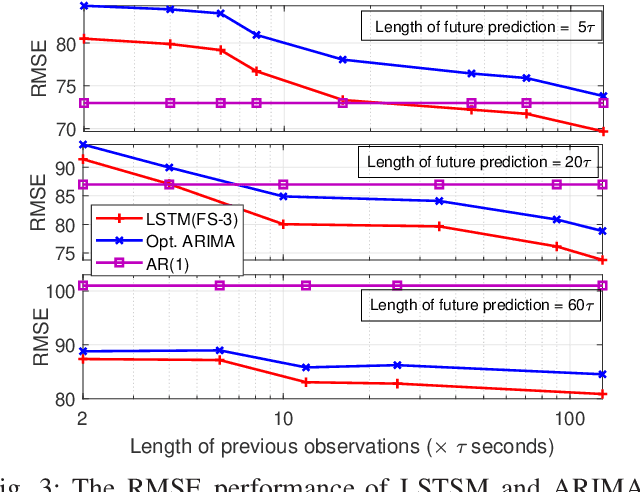
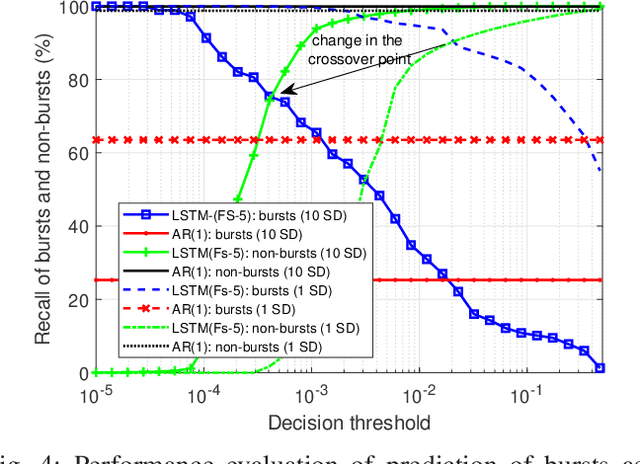
Abstract:Traffic prediction plays a vital role in efficient planning and usage of network resources in wireless networks. While traffic prediction in wired networks is an established field, there is a lack of research on the analysis of traffic in cellular networks, especially in a content-blind manner at the user level. Here, we shed light into this problem by designing traffic prediction tools that employ either statistical, rule-based, or deep machine learning methods. First, we present an extensive experimental evaluation of the designed tools over a real traffic dataset. Within this analysis, the impact of different parameters, such as length of prediction, feature set used in analyses, and granularity of data, on accuracy of prediction are investigated. Second, regarding the coupling observed between behavior of traffic and its generating application, we extend our analysis to the blind classification of applications generating the traffic based on the statistics of traffic arrival/departure. The results demonstrate presence of a threshold number of previous observations, beyond which, deep machine learning can outperform linear statistical learning, and before which, statistical learning outperforms deep learning approaches. Further analysis of this threshold value represents a strong coupling between this threshold, the length of future prediction, and the feature set in use. Finally, through a case study, we present how the experienced delay could be decreased by traffic arrival prediction.
 Add to Chrome
Add to Chrome Add to Firefox
Add to Firefox Add to Edge
Add to Edge